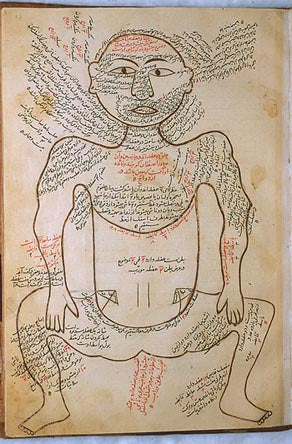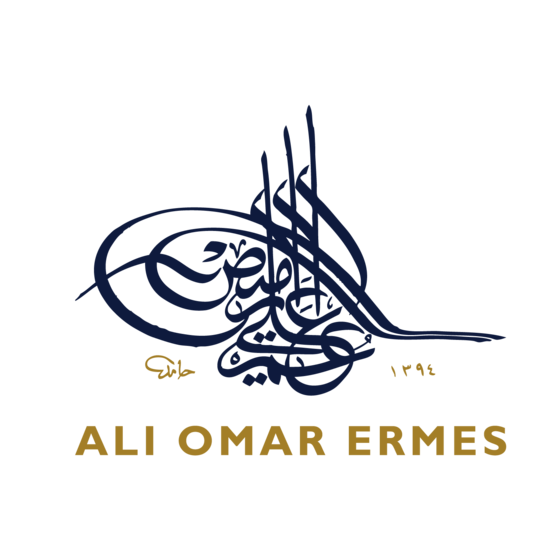Scientific Inventions by Muslims
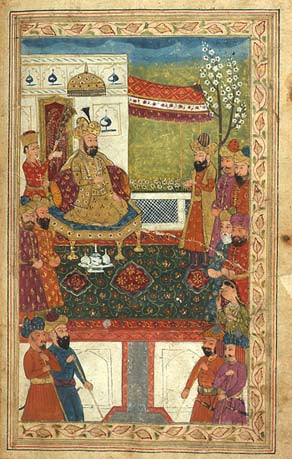
The Islamic Scholar CD ROM, Friday 26 September 2003
Muslims distinguished themselves not only as theoretical scientists and scientific thinkers but contributed through innumerable inventions to the growth of the modern sciences. Though the mediaeval Muslims had very meagre resources at their command as compared to those of the present age, they achieved a great deal. They replaced the old speculative method of the Greeks with an experimental method, which in later periods formed the basis of all scientific investigations.
Inventions
Abul Hasan is distinguished as the inventor of the Telescope, which he described to be a Tube, to the extremities of which were attached diopters”.
The Pendulum was invented by Ibn Yunus, a genius in science who lived in the reign of Aziz Billah and Hakim bi-Amr-illah, the Fatimid monarchs of Egypt. The invention of the Pendulum led to the measurement of time by its oscillations. His outstanding work Sijul Akbar al-Hakimi, named after his celebrated patron Hakim bi-Amr-illah, was acknowledged to be the masterpiece on the subject replacing the work of Ptolemy. It was translated into Persian by Omar Khayyam in 1079.
The first watch was made by Kutbi, a renowned watch-maker of his time. During the Abbasid reign the use of a watch became quite common and the famous Harun-ar-Rashid once despatched a watch as a gift to his celebrated contemporary, the French Emperor Charlemagne. At that time a watch was considered a novel thing in Europe and was regarded as an object of wonder. Mustansariya, the well-known university of Baghdad had a unique clock with a dial blue like the sky and a sun which continually moved over its surface denoting the time. Maulana Shibli, the famous Urdu litterateur, has described a watch of Damascus in the following words: “The watch was kept in the door of a wall. It contained copper plates and twelve doors. There was an Eagle (Bat) standing in the 1st and the last plate. At the end of each hour, these two eagles lay down on the copper plates and hence a sound was produced to show the time. At twelve all the doors were closed. This system was being repeated continuously”. The construction of water clocks was also common in Islamic Countries. “The Arabs were skilful in the construction of clepsydras and water clocks with automata,” says a European writer.
The invention of Mariners Compass, which revolutionised sea borne commerce and oceanic shipping and enabled the Arabs to roam over the stormy seas in quest of new lands and additional marke ts for their commodities, is essentially a contribution of the Muslims to the world of science. Knowledge about the properties of the needle, can no doubt be traced to Chinese sources, but putting it into working shape, in the form of a mariners’ compass, was the achievement of Muslim scientists. The compass was probably invented for the purpose of finding out the Qibla for Prayers.
Mir Fatehullah Khan is known to history as the inventor of gun and gunpowder. The presumption that gunpowder was first made by the Chinese does not stand the test of historical research. Writing in his book Arab Civilization, the author says that “gunpowder was a great invention of the Arabs who were already using guns”. Guns were used by Arabs in 1340 A.D. in the defence of Al-Bahsur, when Franzdol besieged it. The statement of Dr. Leabon about the invention of gunpowder by the Arabs is further corroborated by Mr. Scott in his well-known work, History of the Moorish Empire in Spain.
It has been acknowledged by Joseph Hell in his book, Arab Civilization, that the distinction of inventing photography goes to Ibn al-Hashem, who is not only credited with its invention but also its development. Muhammad Musa, a great scholar of geography, has the unique distinction of being the inventor of an instrument by which the earth could be measured. He also invented the “Astrolabe”. These novel instruments invented by him have been preserved in the Museum of Madrid (Spain).
A unique instrument was invented by Abu Solet Umayya in 1134 A.D. through which a sunken ship would be raised–which greatly helped in the salvage expeditions of mediaeval times.
The credit for manufacturing soap goes to Arab chemists, who introduced it to the world. The first paper in Islamic countries was manufactured in 794 A.D. in Baghdad by Yusuf Bin Omar. The paper manufactured in Arab countries was of superior quality than that made in Europe. In the manufacture of cloth, Muslims particularly in Spain exhibited marvellous skill and taste. Their woven cloth captured almost all the big markets of the world and was considered to be the finest as well as extremely durable.
Al-Masudi who died in Cairo in 957 A.D. may be called the “Pliny of the Arabs” In his celebrated work The Meadows of Gold, he has described an earthquake, and the first windmill which was also invented by a Muslim.
Giralda or “The Tower of Seville”, was the first observatory in Europe. It w as built in 1190 A.D., in the Spanish town of Seville under the supervision of the celebrated Mathematician, Jabir Ibn Afiah. It was meant for the observation of heavenly bodies. It was later turned into a belfry by Christian conquerors, who, after the expulsion of the Moors, did not know how to use it.
Bold experiments and unique innovations in the field of mathematics were carried out by Muslim mathematicians who developed this science to an exceptionally high degree. Algebra may be said to have been invented by the Greeks, but according to Oelsner, “it was confined to furnishing amusement for the plays of the goblet” Muslims developed it and applied it to higher purposes. They invented spherical trigonometry, discovered the tangent and were first, “to introduce the sine of arc in Trigonometrical Calculations” Zero is an invaluable addition made to mathematical science by the Muslims. They have also shown remarkable progress in mathematical geography.
The Muslims have made a lasting contribution to the development of Medical Science. Razi (Rhazes), Ibn Sina (Avicenna), and Abu Ali al-Hasan (Alhazen) were the greatest medical scholars of mediaeval times. Al-Razi was the inventor of “Seton” in Surgery and the author of Al-Judari wal Hasbak, an authentic book dealing with measles and small pox. Avicenna wrote Al-Qanun Jil Tib known as Cannon, which was the most widely studied medical work of mediaeval times and was reprinted more than twenty times during the last 30 years of the 15th century in many different languages. Alhazen was the world’s greatest authority on “optics”. The contagious character of the plague and its remedies were discovered by Ibn Katina, a Moorish Physician.
Ibn Firnas is credited with making glass from stones. He had constructed his home as a sort of planetarium where one could see stars, clouds and even lightning. According to Hitti – ‘Ibn Firnas was the first man in Arab history to make a scientific attempt at flight. His flying equipment consisted of a suit of feathers with wings, which, we are told carried him a long distance, in the air. When he alighted, however, he hurt himself because his suit was not provided with a tail.
Copied from ‘THE ISLAMIC SCHOLAR’, to purchase the CD ROM please go to: http://www.parexcellence.co.za/
The image used in this article is taken from Islamic Medical Manuscripts at the National Library of Medicine, go to: http://www.nlm.nih.gov/hmd/arabic/catalog_tb.html
Leave a comment
Also in SCIENCE & MEDICINE
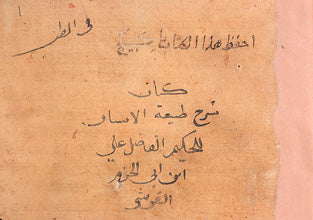
Revolution by the Ream
Paper, one of the most ubiquitous materials in modern life, was invented in China more than 2000 years ago. Nearly a millennium passed, however, before Europeans first used it, and they only began to manufacture it in the 11th and 12th centuries, after Muslims had established the first paper mills in Spain. The German Ulman Stromer, who had seen paper mills in Italy, built the first one north of the Alps at Nuremberg in the late 14th century.
The cultural revolution begun by Johann Gutenberg's printing press in 15th-century Mainz could not have taken place without paper mills like Stromer's, for even the earliest printing presses produced books at many times the speed of hand copyists, and had to be fed with reams and reams of paper. Our demand for paper has never been satisfied since, for we constantly develop new uses for this versatile material and new sources for the fiber from which it is made. Even today, despite the computer's promise to provide us with "paperless offices," we all use more paper than ever before, not only for communication but also for wrapping, filtering, construction and hundreds of other purposes.
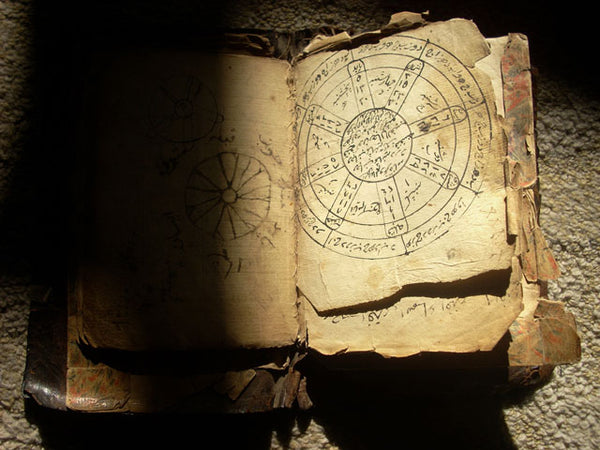
The Great Explorers of Islam
It was an Arab caravan which brought Hazrat Yusuf (Prophet Joseph) to Egypt. Moreover, the fertile areas in Arabia including Yemen, Yamama, Oman, Bahrein and Hadari-Maut were situated on the coast, and the Arabs being sea-faring people took sea routes in order to reach these places and fulfilling their commercial ventures.
